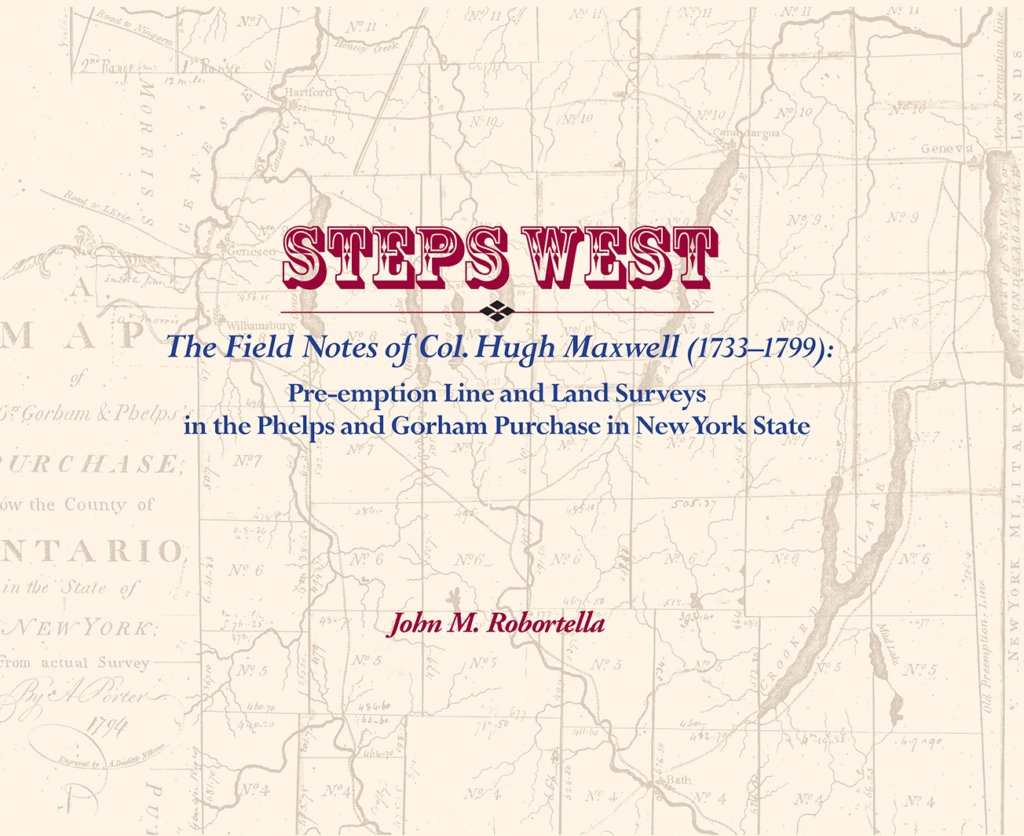New Local History Book
The Pre-emption Line Survey That Started It All: What Happened?

CANANDAIGUA, NY—For more than two centuries, questions have lingered about the survey of the Pre-emption Line, the eastern boundary of the Phelps and Gorham land purchase in western New York State.
A new local history book, Steps West: The Field of Notes of Col. Hugh Maxwell (1733–1799)—Pre-emption Line and Land Surveys in the Phelps and Gorham Purchase in New York State, by John Robortella of Canandaigua, N.Y., takes a fresh look at what went wrong with the original 1788 survey and includes for the first time a complete transcription of the handwritten notes of Col. Hugh Maxwell, the chief surveyor of the line.
The line was to have run due north from the 82nd milestone on the Pennsylvania border along a geographic meridian to Lake Ontario. Oliver Phelps planned to make his land office headquarters at Kanadesaga, a Seneca settlement near present-day Geneva, N.Y.
According to reckoning by eye even on the most rudimentary maps of the day, a line drawn north from Pennsylvania line would pass through Seneca Lake. The Indian settlement would be just west of the line and on the Phelps and Gorham Purchase.
Phelps hired an experienced surveyor of impeccable credentials—Col. Hugh Maxwell (1733–1799), a Revolutionary War veteran who was known as “the Christian patriot”—to make the survey. But in Col. Maxwell’s trial survey in June 1788 and his formal survey in July and August of that year, the Pre-emption Line veered to the west.
From the results of the trial survey, Mr. Phelps became aware that the line was not where he thought it would be. Without hesitation, he instructed his real estate agent William Walker to move headquarters to Canandaigua, N.Y., about 15 miles west and a settlement that was certain to be on the Purchase.
Some historians wrote that the line was skewed to the west because it was the surveyor’s error. Others suggested it was fraud by members of a competing land company who infiltrated the survey team. Still others wrote that the colonel became ill and went home to Massachusetts, leaving his assistants to complete the survey.
Col. Maxwell kept a notebook of his surveys. It remained in his possession until his death when it was passed down to his children and grandchildren. Historians writing in the period from 1788 to 1882 perhaps never knew that the notebook existed. The first published excerpts appeared in the Ontario County Times in 1883 and 1884. In 1965, the notebook was presented to the Geneva Historical Society.
The 110-page soft cover book includes a foreword and an essay on “Into the Phelps and Gorham Purchase,” followed by the transcription of the field notes, findings, and appendices with a biography of Col. Maxwell and transcriptions of a number of his letters.
The book is published by Finger Lakes Historical Press.
Books are available at:
- Cheshire Union Gift Shop, 4244 State Route 21, Canandaigua, N.Y.
- Ontario County Historical Society Gift Shop, 55 N. Main Street, Canandaigua, N.Y.
- Historic Geneva, 543 South Main Street, Geneva, N.Y.